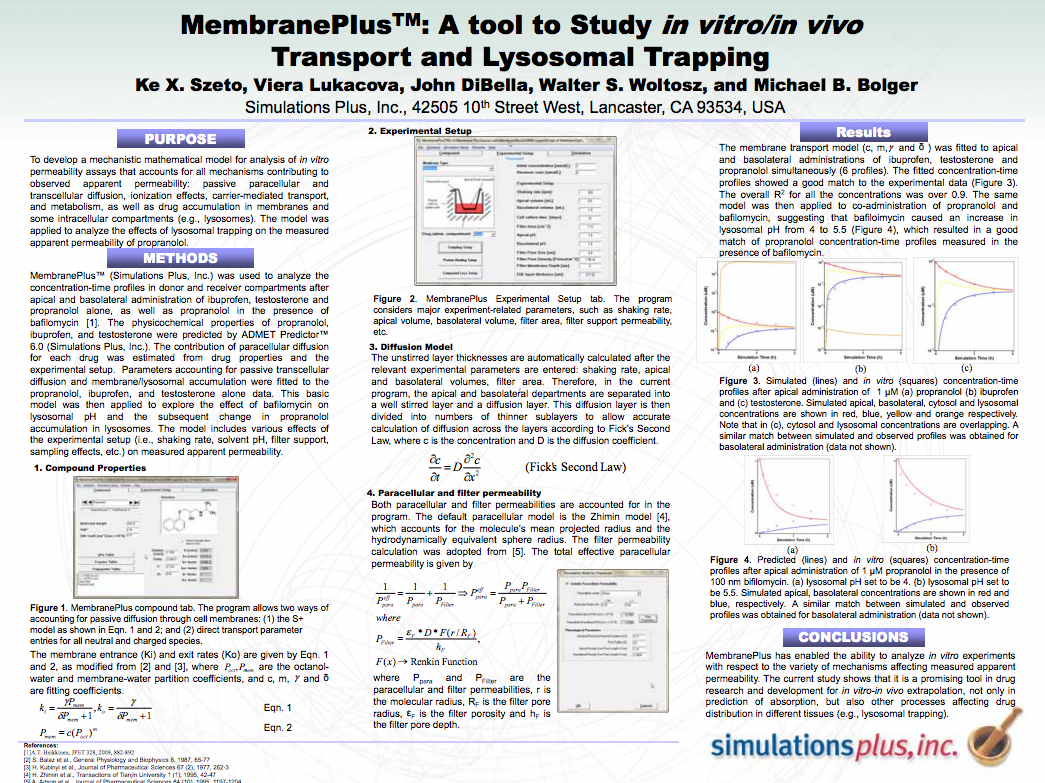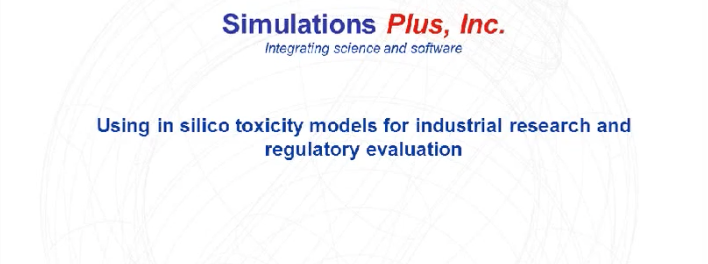Esterification was used to simultaneously increase solubility and permeability of ciprofloxacin, a biopharmaceutics classification system (BCS) class 4 drug (low solubility/low permeability) with solid-state limited solubility.

Predicting Pharmacokinetic Profiles Using in Silico Derived Parameters
Human pharmacokinetic (PK) predictions play a critical role in assessing the quality of potential clinical candidates where the accurate estimation of clearance, volume of distribution, bioavailability, and the plasma-concentration- time profiles are the desired end points.

The Drama in Drug Development
In 2005, playwright David Mamet* wrote a memo to the writers of the TV show The Unit that went viral on the internet. I have taken some liberties to adapt the memo to pharmacometricians on drug development teams. If you read the online version of the real memo, you will see that I did not have to do much editing, save for redefining the word “drama.”

Interaction of Silymarin Flavonolignans with Organic Anion Transporting Polypeptides (OATPs)
Organic anion-transporting polypeptides (OATPs) are multispecific transporters mediating the uptake of endogenous compounds and xenobiotics in tissues that are important for drug absorption...

Insight…Inspiration…Innovation
Welcome to the beginning of 2013. Most of us, I bet, had a challenging 2012, certainly it was stressful, but there is so much to be grateful for and, if one is optimistic, there are many opportunities that are full of promise for the New Year.

Three-Dimensional Quantitative Structure–Activity Relationship Analysis of Inhibitors of Human and Rat Cytochrome P4503A Enzymes
Cytochrome P450 3A4 (CYP3A4) is a member of the CYP family and is an important enzyme in drug metabolism.

Simulations Plus Reports First Quarter FY2013 Financial Results
Net sales increase 1.9% to first-quarter record $2.290 million; Earnings per share $0.04

I don’t understand why you don’t agree with me.
A New York Times* online essay by Gary Gutting, a philosophy professor, contains one of the clearest explanations of the differences between inductive and deductive reasoning I have seen.

Use of In Vitro-In Vivo Correlation to Predict the Pharmacokinetics of Several Products Containing a BCS Class 1 Drug in Extended Release Matrices
To determine if an IVIVC model can predict PK profiles of varying formulations of a BCS Class 1 drug that is a salt of a weak base.

Case Studies for Practical Food Effect Assessments across BCS/BDDCS Class Compounds using In Silico, In Vitro, and Preclinical In Vivo Data
Practical food effect predictions and assessments were described using in silico, in vitro, and/or in vivo preclinical data to anticipate food effects...

Structure-Activity-Selectivity Relations on the Keto-Pyrrolyl-Difluorophenol Aldose Reductase Inhibitory Scaffold
In recent years it has been observed worldwide a striking increase of cases of diabetes mellitus, which tend to attain an epidemic prevalence.

MembranePlus™: A Tool to Study in vitro/in vivo Transport and Lysosomal Trapping
To develop a mechanistic mathematical model for analysis of in vitro permeability assays that accounts for all mechanisms contributing to observed apparent permeability: passive paracellular and…

A Computational Drug-Target Network for Yuanhu Zhitong Prescription
Yuanhu Zhitong prescription (YZP) is a typical and relatively simple traditional Chinese medicine (TCM), widely used in the clinical treatment of headache, gastralgia, and dysmenorrhea.

Virtual Screening and Biological Evaluation of Inhibitors Targeting the XPA-ERCC1 Interaction
Nucleotide excision repair (NER) removes many types of DNA lesions including those induced by UV radiation and platinum-based therapy.

Modeling drug- and chemical-induced hepatotoxicity with systems biology approaches
We provide an overview of computational systems biology approaches as applied to the study of chemical- and drug-induced toxicity.

Simulations Plus Announces Accelerated Quarterly Cash Dividend
Company declares accelerated cash dividend of $0.14 per share

Don’t shoot.
Criminologist David M. Kennedy’s (1) strategy for reducing gang violence has dramatically reduced youth homicide rates nationwide. Dubbed the “Boston Miracle,” this strategy brings together all the key actors in a neighborhood from the police and community members to gang members, drug dealers, and their mothers and grandmothers to openly discuss their issues. Boston’s youth murders were cut by two thirds after installation of the program (2).

Simulations Plus Reports Preliminary Revenues for First Fiscal Quarter FY2013
Revenues Increase 1.9% for New Record 1st Quarter

Toxicity Webinar
Simulations Plus offers a rapidly growing array of accurate predictive models in ADMET Predictor™, focused on toxicity endpoints deemed important by regulatory agencies.
